"Pipe Dreams, by Joseph Dephoure, ACL, and Edward Atkins, ACL, is ranked among the year's ten best because of its considerable triumphs over dramatic and technical difficulties. Through the imagination of its producers, a small cast, simple settings and moderate footage have been used to tell a big story, rich in pictorial effect. Dreaming that he has murdered his unfaithful wife, a young man sees in prospect the swift and fearful course of his life to the waiting gallows. The murder, the trial, the death cell and the hanging are represented in large part only by the imaginative and striking use of shadows of the real scenes. Occasional straight shots are heightened in effect by unusual angles and dramatic lighting. Sensitively planned, smartly executed and deftly cut, Pipe Dreams makes its simple story exciting and forceful." Movie Makers, Dec. 1933, 500.
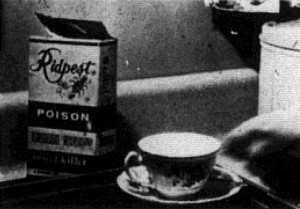
"The dutiful husband gets his own breakfast while his wife enjoys the luxury of sleeping late in the morning. He leaves her breakfast near the bed and we leave him for business. He becomes disturbed over the thought of a possible error in her food serving and feels the need to communicate her immediately. A nice gentle suspense builder" PSA Journal, Oct. 1961, 47.
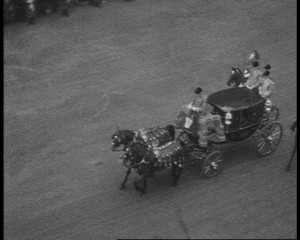
"Shots from an upper story window in Parliament Street of the activity in the street below prior to the arrival of carriages carrying the royal family and bride on their way to Westminster Abbey, during the ceremony and as the carriages return, highlighting in particular the foggy day. Scenes include crowds outside 100 Parliament St; a procession of civilians with flags which marches in the direction of the Cenotaph; the activities of troops prior to the arrival of the royal procession; carriages carrying the royal family and emerge from the fog near the cenotaph, are filmed as they pass by and head towards Westminster Abbey in the fog; activities in the street after the processions have gone; crowds waving at carriages as they return; activities as crowds disperse from in front of the building opposite; film concludes with a procession of civilians with flags which marches from the direction of the Cenotaph" (EAFA Database).
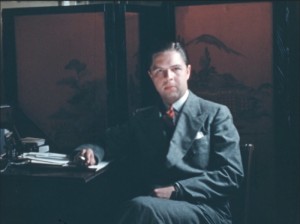
A woman is tempted with thoughts of another man after her husband disappoints her on their anniversary. Will she follow through with the act, or will she remain faithful to her husband?
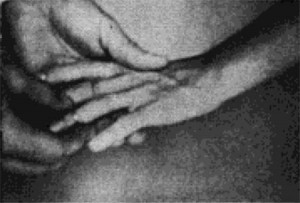
"In a few short minutes Edward M. Crane has presented a cycle of life through the close-up of hands. Boy meets girl, repeated visits, flowers, embrace, ring, wedding, honeymoon, bills, a fast trip to the hospital, and then a little hand. It is short, smooth, and it tells the story" PSA Journal, Nov. 1958, 46.
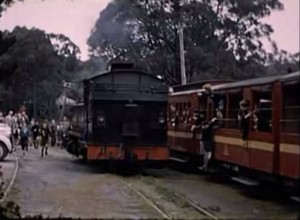
"Amateur travelogue of an extensive trip to Australia photographed and produced by "The Traveling Sebrings," Lewis B. Sebring, Jr. and Alice P. Sebring. Lewis B. Sebring, Jr. was a journalist and war correspondent for the New York Herald-Tribune, who reported on combat in the Southwest Pacific Area theater during World War II. The trip documented in this film, which they referred to also as "An Odyssey to Australia" covers the entire continent of Australia, from Sydney, Melbourne, Adelaide, Port Augusta and Kalgoorlie, Perth, and Brisbane, and everything in between, usually documented via passenger train. In each city, the film expertly documents landscape, architecture, and people, as well as rural areas and animals." Wisconsin Historical Society.
"Stillborn, also winner of the MPD Student Film award for the best film made by a student enrolled in a college course in cinematography, is an experimental film at times abstract in its execution. It tells the story of a boy and girl who meet out in the middle of nowhere. As he looks upon the young girl's face he imagines what life with her might be like. His imagination runs wild as he thinks of the blissful episodes such as marriage would bring, as well as the entrapment he could suffer. At film's end he makes his decision. Use of the negative image for one sequence is extremely effective" PSA Journal, Sept. 1966, 34.
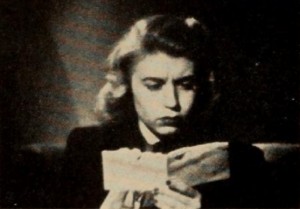
"Although there is no actual violence portrayed in this psychological thriller, Storm Due — in which a young wife discovers her husband to be a murderer — is instinct with mounting tension and terror. Francis J. Barrett's film is a potent combination of several related elements. Wedded almost as one are dramatic, hard-hitting camera angles and the visual stimulus of brilliant, low-key lighting. Acting of theatrical calibre by the young wife is accented by an off-stage voice which underlines her fears — a technique that suggests a loan from the best in modern radio. A taut continuity only hints at the story line as it hurries through this exciting evocation of violence. This very economy of dramatic exposition, in fact, will make Storm Due an unpopular and often misunderstood production. For these reviewers, however, it remains creative cinema of a very high order." Movie Makers, Dec. 1949, 454-455.
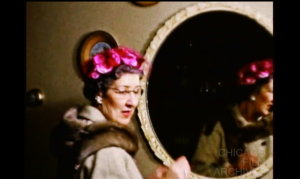
"An amateur film made by and starring the husband and wife duo, John & Evelyn Kibar. John is frustrated with Evelyn’s hat shopping habits. To distract John’s frustrations, Evelyn surprises John with a cake. Title cards with dialogue are dispersed throughout the film." Chicago Film Archives
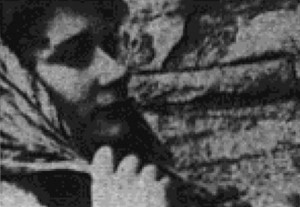
"The Stray is a well written little story concerning a lonely little woman who returns to her husband, but finds he wants no more to do with her, for reasons explained as the story unfolds. Its ring of sincerity, coupled with good acting on the part of both the woman and her husband, was most surely the primary basis for the film landing in the top ten" PSA Journal, Aug. 1967, 36.
Total Pages: 6